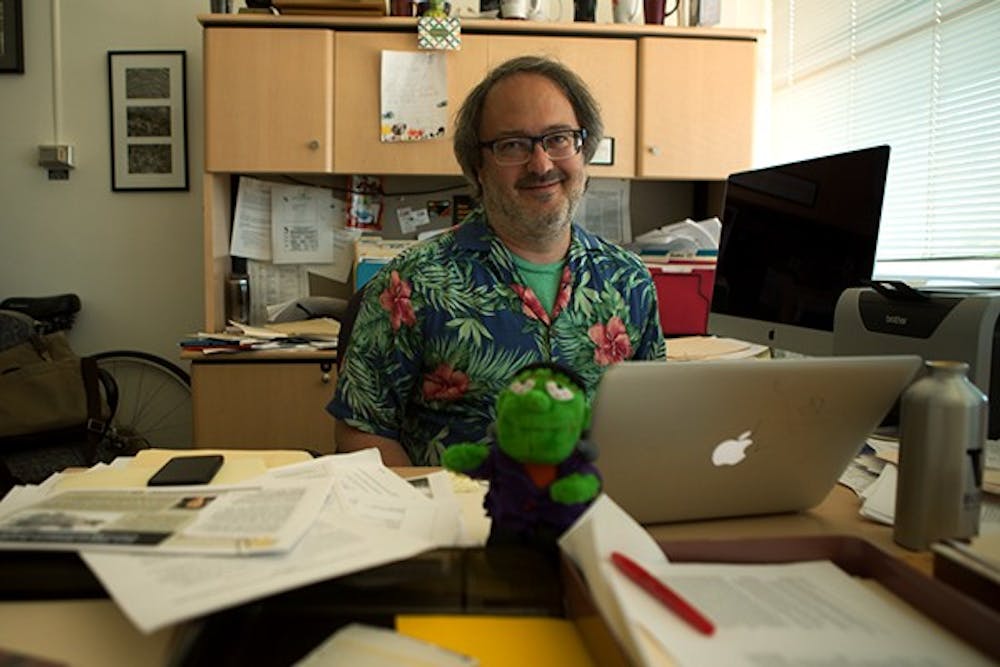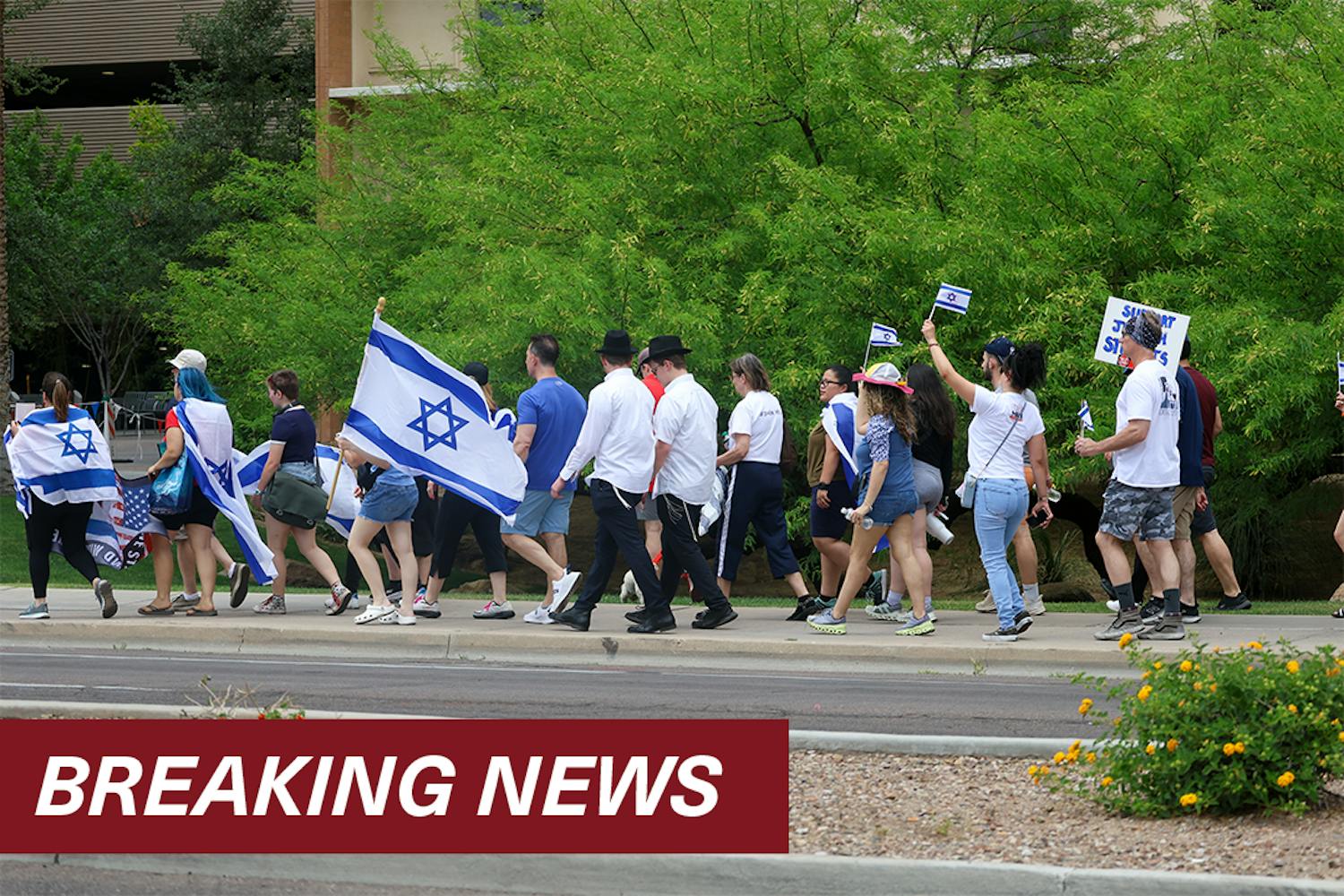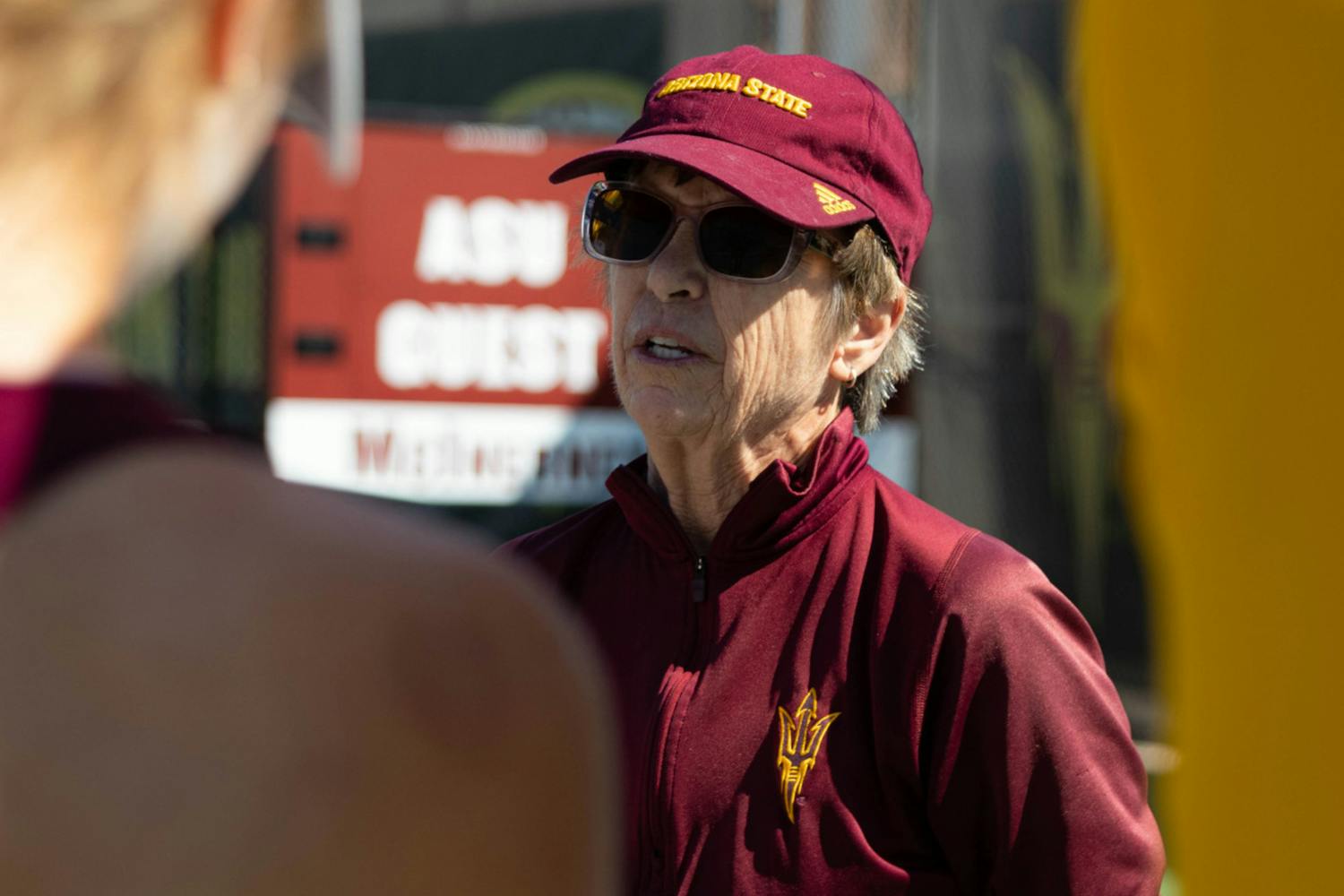David Guston is one of the three ASU researchers who have received a grant from the National Science Foundation to lead a workshop to build a global, multi-institutional network of collaborators to celebrate the bicentennial of the publication of Mary Shelley’s "Frankenstein.” (Photo by Ryan Liu)
It was a rainy summer night on the shores of Lake Geneva when 18-year-old Mary Shelley and her friends were challenged by Lord Byron to write the best horror story. Shelley’s "Frankenstein" was the only product of the contest to be published.
Nearly 200 years later, ASU researchers have received a grant from the National Science Foundation to collaborate on a workshop to celebrate the bicentennial of the publication of "Frankenstein," or The Modern Prometheus.
The bicentennial will span from 2016 through 2018. David Guston, who is the co-principal investigator for the initiative, said he came up with the idea when the grant for his current project was about to expire.
“About two years ago now, I was trying to think about what my next project will be,” he said. “I have been, since 2005, the director of a large center funded by the National Science Foundation called the Center for Nanotechnology in Society, but the grant for that center is going to expire in 2015, and I was trying to imagine what things at large scale I might be interested in doing and see what kind of fun I might have.”
Guston said he was trying to develop a new large-scale project.
“I don’t remember how exactly it dawned on me, but I realized at that time in 2018 it would be the bicentennial of Mary Shelley’s novel and thought there would be no better place than ASU to be able to commemorate a lot of the interdisciplinary ideas,” he said.
Guston said he came up with the idea of what the workshop structure might be like when he witnessed the festival-like arrangement of Emerge, a festival of scientific innovations held annually on ASU's campus in the spring.
The Frankenstein Bicentennial will act as a jump-start for realigning research across different disciplines at ASU. It will encourage open collaborations between groups that might not normally work together.
“The research is just about anything you can imagine as well as probably research across a variety of different disciplines,” Guston said. “Part of the idea behind this workshop is we’ll have one working group on table-top demonstrations or things you might find in science museums."
Some of the projects being planned include writing and art competitions, a Halloween costume gala, scientific demonstrations and museum exhibits that blend science, art and history.
The project is officially titled "Informal Learning And Scholarship In Science And Society: A Multi-Disciplinary Workshop On Scientific Creativity and Societal Responsibility." It will bring together various groups of scholars, researchers, science educators, museum curators, writers and artists this month to establish the foundation for the global celebration of this bicentennial. ASU will be acting as the project headquarters.
Researchers and scholars will set up scientific demonstrations that Shelley might have witnessed which gave her ideas for her novel. Galvanism was a major inspiration for "Frankenstein."
Galvanism is the contraction of muscles stimulated by electric current. The effect was named after scientist Luigi Galvani, who referred to the phenomenon as animal electricity, believing he had found some sort of distinct electricity.
During Shelley’s time, galvanism was the newest scientific research being done in Europe. Shelley devotes the preface of her novel to why she chose to revel in the idea of galvanism as it led to her radical idea of creating life through electricity.
In her preface, she said, “I saw — with shut eyes, but acute mental vision — I saw the pale student of unhallowed arts kneeling beside the thing he had put together. I saw the hideous phantasm of a man stretched out, and on the working of some powerful engine, show signs of life and stir with uneasy, half vital motion.”
Guston said to recreate those kind of demonstrations, they needed people with insight from the laboratory bench.
“We need folks who have been doing this kind of research and how they understand translating the ideas and materials that they are working with and putting what they are working with into a table top or museum,” he said.
Ed Finn, faculty in the School of Arts, Media + Engineering in the Herberger Institute for Design and the Arts, will be co-directing the workshop with Guston. He said he would be focusing more on the literary side of the project.
“It’s the most successful of modern myths,” he said. “In bookstores, there are multiple editions, because it is such a complex story and an incredible spectrum of artistic literature with a relationship between technology and the things we create.”
Finn said "Frankenstein" is a very smart and dynamic novel that is intensely human and emotional.
“I think one of things that makes it last is that it combines scientific material with fantasy,” he said. “Shelley was very interested in that.”
One speculation to why Shelley was so interested in the idea of recreating life was that she had experienced loss many times throughout her lifetime. Her mother, Mary Wollstonecraft, died while giving birth to her and Shelley had also lost multiple children from illness and childbirth and her husband by the time she was only 24.
Finn said "Frankenstein" can be translated as Shelley’s own anxiety and insecurities about her own reproductive capabilities.
“Mary was keenly aware of reproduction,” Finn said.
English professor Cajsa Baldini will also be collaborating alongside Finn and Guston during the workshop. Her research interests are centered on 19th century British and European literature.
She said she teaches a course that focuses on the novel.
“Students read the novel and then they read what the monster in the novel reads and things that the author read,” she said. “They can make connections between basic human connections such as parenthood, gender and race, which was an excellent starting point of Western culture coming out of the Enlightenment.”
Baldini said "Frankenstein" has never been out of print since its first publication.
“I think 'Frankenstein' touches the most basic human concerns, so it is not dated,” she said.
Reach the reporter at kgrega@asu.edu or follow her on twitter @kelciegrega




